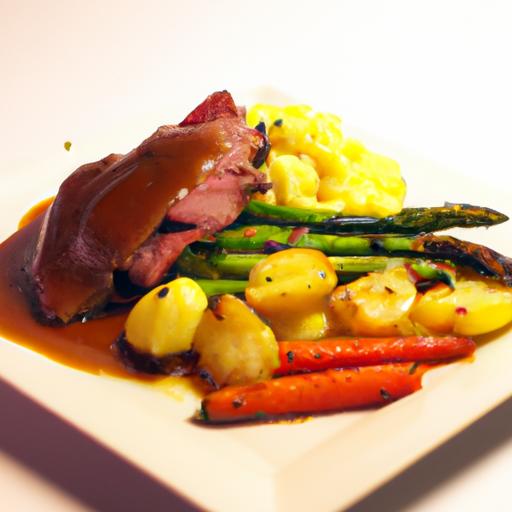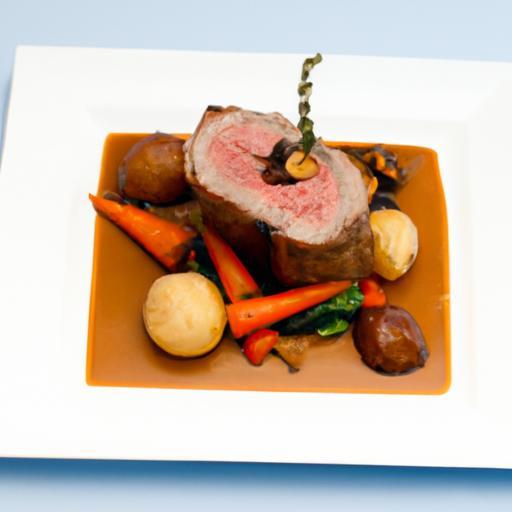There’s a secret lurking in kitchens worldwide, transforming humble stews into unforgettable feasts: the art of searing meat before it hits the pot. This sizzling prelude isn’t just about adding color-it’s a bold flavor unlocked through caramelized crusts and rich, savory depth. Far from an optional step, searing breathes life into every bite, turning simple ingredients into a symphony of taste. Join us as we explore why this sizzling ritual matters and how it elevates your stew from ordinary to extraordinary.
Unlock Bold Flavors: Mastering Searing for Delectable Stews
Unlock Bold Flavors by understanding how to harness the power of searing before stewing, elevating your dishes with rich aromas and complex taste profiles. This technique transforms humble cuts of meat into deep, savory treasures through a culinary process celebrated worldwide.
Prep and Cook Time
- Preparation: 20 minutes
- Cooking: 2 hours 30 minutes (including stewing time)
Yield
- Serves 6 hearty portions
Difficulty Level
- Medium – Perfect for home cooks eager to enhance their flavor skills
Ingredients
- 2 lbs beef chuck, cut into 1.5-inch cubes
- 2 tbsp vegetable oil (for searing)
- 1 large onion, finely chopped
- 3 cloves garlic, minced
- 2 carrots, sliced diagonally
- 2 celery stalks, chopped
- 1 cup dry red wine (optional but recommended)
- 4 cups beef broth
- 2 bay leaves
- 1 tsp dried thyme
- Salt and freshly ground black pepper, to taste
Instructions
- Pat the beef dry with paper towels to remove excess moisture. This step is crucial to promote that golden-brown crust created by the Maillard reaction.
- Season the beef cubes generously with salt and pepper on all sides.
- Heat a heavy-bottomed skillet or Dutch oven over medium-high heat until shimmering. Add vegetable oil.
- Sear the beef in batches, avoiding overcrowding. Allow each piece to develop a rich, deep brown crust (about 3-4 minutes per side). Resist the urge to move the meat prematurely-this ensures perfect caramelization that unlocks bold flavors.
- Set the seared beef aside and reduce heat to medium. In the same pot, sauté onion, garlic, carrots, and celery until softened and fragrant-about 5 minutes.
- Pour in the red wine, scraping up browned bits from the pan. Let it reduce for 3-4 minutes, intensifying taste layers.
- Add the beef broth, bay leaves, dried thyme, and seared beef back into the pot. Bring to a gentle simmer.
- Cover and stew on low heat for 2-2.5 hours, until the beef is tender and infused with those deep seared notes.
- Before serving, taste and adjust seasoning with salt and pepper.
Chef’s Notes: Tips for Success
- Choosing the right cut makes a striking difference: opt for beef chuck or brisket that withstand long cooking while developing tenderness.
- Drying your meat beforehand ensures a robust crust rather than a steamed surface.
- Don’t rush the searing; patience is key. A golden crust enhances flavor complexity more than spices alone.
- Include wine or an acid component to deglaze, these lift those fond bits from the pan boosting umami depth.
- For a make-ahead option, cool the stew completely and refrigerate overnight-the flavors will meld and deepen beautifully.
Serving Suggestions
Present your stew rustic-style in a wide bowl, garnished with fresh parsley or thyme sprigs for color. Pair with creamy mashed potatoes or buttered egg noodles to soak up the lush broth. A crusty artisan bread on the side is perfect for sopping up every flavorful drop, inviting diners to savor each rich mouthful thoroughly.
| Nutrient | Per Serving |
|---|---|
| Calories | 420 kcal |
| Protein | 35 g |
| Carbohydrates | 12 g |
| Fat | 22 g |
Discover more techniques on slow cooking meat and dive into flavor-depth further. For scientific background on searing and the Maillard reaction, visit ScienceDaily’s breakdown.

Q&A
Q&A: Unlock Bold Flavors – Why Searing Meat Before Stewing Matters
Q1: What is searing meat, and how does it differ from simply cooking it?
A1: Searing is the quick, high-heat browning of meat’s surface before it’s cooked slowly, like in stewing. Unlike just cooking, searing caramelizes the meat’s exterior, creating a deep, flavorful crust that enhances both taste and texture.
Q2: Why is searing considered a crucial step before stewing meat?
A2: Searing locks in meat’s natural juices and kickstarts the Maillard reaction-a chemical dance between amino acids and sugars-that generates complex, savory flavors. This flavor base transforms the stew from bland to boldly mouthwatering.
Q3: Does searing seal the meat’s juices as many believe?
A3: While the old myth says searing “seals in” juices, science suggests it’s more about flavor development than moisture retention. Proper searing creates a tasty crust that enriches the stew’s broth and overall experience.
Q4: How does searing affect the final texture of stewed meat?
A4: The flavorful crust formed during searing adds a slight chew and textural contrast to the tender braised interior. This interplay of textures makes each bite more interesting and satisfying.
Q5: Can I skip searing if I’m in a hurry or want a healthier option?
A5: You can skip it, but it’s like painting without a base coat-your stew might taste flat or one-dimensional. For health-conscious cooks, searing with minimal oil or using a non-stick pan still yields big flavor with less fat.
Q6: What tips ensure perfect searing before stewing?
A6: Pat meat dry to promote browning, don’t overcrowd the pan to avoid steaming, and let the meat sit undisturbed until a rich brown crust forms. Use high heat and a bit of oil with a high smoke point for the best results.
Q7: Does searing benefit all types of stewed meats equally?
A7: Most meats-beef, lamb, pork, even chicken-gain flavor depth from searing. However, very delicate proteins might need gentler treatment to avoid toughness or burnt flavors. Generally, if the meat benefits from slow cooking, searing is a flavor booster.
Q8: How does searing meat influence the stew’s overall flavor?
A8: The browned bits left in the pan after searing (called fond) dissolve into the stew’s liquid, enriching it with umami-packed goodness. This layering effect amplifies the stew’s complexity, elevating humble ingredients into a symphony of flavor.
Q9: Can I use the same pan for searing and stewing?
A9: Absolutely! That pan carries the concentrated flavors from searing, which become part of the stew’s base. After searing, deglaze the pan with broth, wine, or aromatics to lift the fond and infuse your stew with those bold notes.
Q10: In short, why should home cooks embrace searing before stewing?
A10: Searing is your secret weapon to transform simple stewed meat into a feast bursting with depth, aroma, and satisfying textures. It’s a small step that unlocks bold flavors, turning good meals into unforgettable culinary experiences.
In Summary
In the grand symphony of cooking, searing meat before stewing is the crescendo that transforms a simple dish into a bold, flavorful masterpiece. This crucial step not only locks in juicy textures but also unleashes a depth of taste that slow cooking alone can’t achieve. So next time you reach for that stew pot, remember: a quick sear is your secret weapon-turning humble ingredients into a rich, aromatic celebration of flavor. Embrace the sizzle, savor the difference, and let every bite tell a story of culinary craftsmanship.


